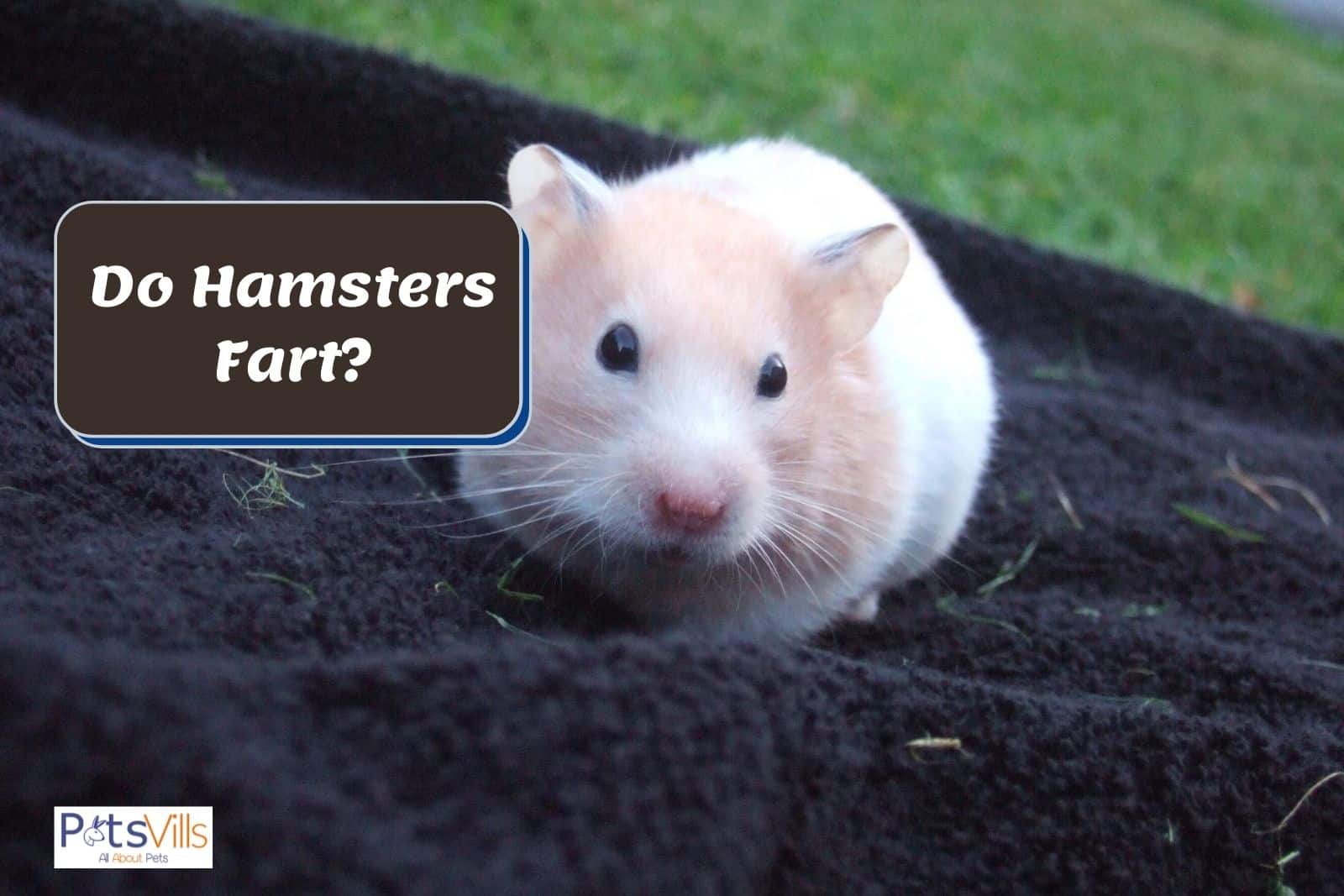Before you buy and start caring for a hamster you may have some questions that you’d like to research.
Do Hamsters Fart? Hamsters can fart but it is rare for them to smell or make a noise. It’s unlikely you will notice it.
Luckily enough hamsters don’t pass that much gas due to their size and it doesn’t smell or make a noise.
In this article, we will explore this in more depth and other common questions relating to gas build-up and their diet.
Check: How Long Can Hamsters Be Left Alone?
Table of Contents
Do Hamsters Fart?
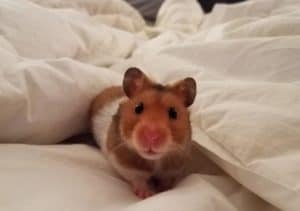
Hamsters can fart although it is rare for them to smell or make a noise.
Farts, or releasing flatulence, are a normal part of digesting food.
If passing gas is severe, there could be something wrong with your hamster’s digestive tract or the food he’s eating.
Flatulence is a method to get rid of excess gas in the body. Your GI tract, just like your hamster’s creates gas as a normal part of breaking down food.
The gas comes from several different routes. The first is that when you eat and drink, you swallow some hair, which ends up in the GI tract.
Carbohydrates, one of the major macromolecules of food, get largely broken down and absorbed in the small intestine.
Carbs that end up passing on to the large intestine provide food for the bacteria that normally reside in the gut.
These bacteria are largely gas-producing bacteria. As they feed on the carbohydrates, they release gas, which has to go somewhere.
Some people and animals have bacterial overgrowth in their gut, which can be caused by different diseases. This excess of bacteria creates even more gas than normal, increasing the likelihood of needing to fart.
READ MORE: All About Hamster Shedding
Does Hamster’s Farts Smell?
Hamster farts have the potential to smell, but the odds of them smelling is quite low.
The quantity of gas that your hamster produces is not very much, making it less likely for you to end up smelling the gas.
Some foods that they eat might increase the likelihood of your hamster passing stinky farts, such as protein-heavy meals.
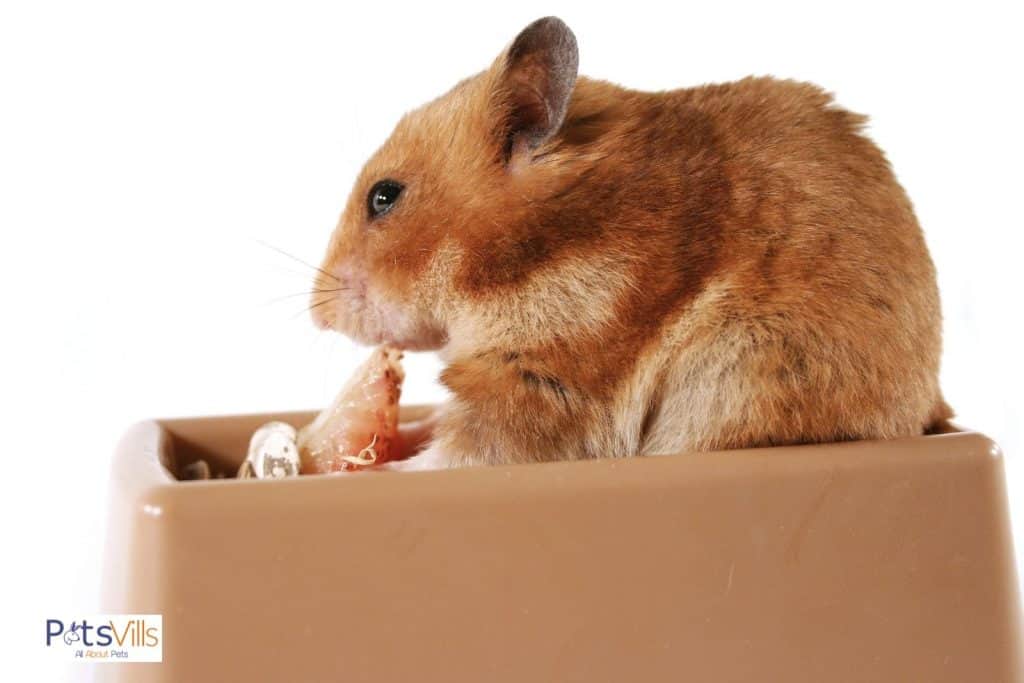
Farts are made out of a combination of gases. The stinkiest gas, which gives farts their characteristic smell, is hydrogen sulfide.
Hydrogen sulfide gases, while stinky, only make up a small percentage of the overall gas released in a fart, only around 1 percent of the gases released from the large intestine.
Other gases are much more plentiful in farts, such as nitrogen, which makes up around 59 percent of the gas in a fart. Carbon dioxide is also released in an animal’s fart, roughly 9 percent.
Oxygen is also present in farts, but it only makes up around 4 percent of the gases in a fart. Hydrogen is plentiful in farts, at about 21 percent, while the remaining gas in farts is methane, at roughly 7 percent.
If you think about it, a hamster fart is pretty small, and 1 percent of that is a very tiny amount to have smell truly bad. As such, you’re not likely to smell your hamster’s fart.
Related: Do Hamsters Smell?
How Loud Do They Pass Gas?
Hamsters are not considered to fart very loudly. They just don’t produce as much gas as other animals, given their small size.
Different factors can affect how loud passing gas is. The first is the amount of gas that has been produced by the bacteria in the gut.
A large amount of gas has a greater chance of sounding loudly compared to a small amount. Hamsters do not usually produce much gas based on the size of their gut, so they tend to be quieter.
The speed that a fart exits the body is another factor that can affect how loud a hamster passes gas.
Scientists don’t really know how fast the gas comes out, so that is a harder factor to judge and determine how it might affect a hamster.
Another major factor that affects how loud a fart is how tightly constricted the anal sphincter muscles are. These muscles surround the rectum and keep it closed until your hamster farts or defecates.
This last reason could be a big contributor to how loud a hamster farts. As the gas passes through the sphincter, it causes a vibration that produces a sound.
Does The Type of Food I Feed My Hamsters Affect How Often They Fart?
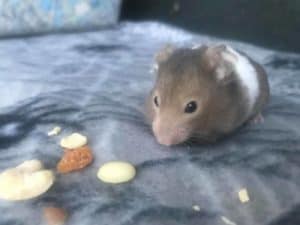
The type of food that you feed can definitely contribute to how often your hamster farts and how stinky those farts may be.
Certain foods contribute to farts, largely because they resist digestion in the small intestine.
A major class of these foods is known as FODMAPS, which are fermentable oligosaccharides, disaccharides, monosaccharides, and polyols.
Some foods that we and our hamsters eat belong to the FODMAPS group, such as fructose, which is found in some fruits. Luckily, many foods that are FODMAPS are ones that your hamster should not get or should eat in moderation.
Dairy is a major contributor to flatulence due to its components such as lactose. Many mammals lose the ability to digest lactose, which increases the likelihood of it causing bad gas.
Hamsters should not be fed many dairy products, so this is not something you should have to worry about making your hamster fart.
There are some reports that they can eat some cheeses, but this should really be limited and not be a major portion of his or her diet.
Beans are commonly associated with farting, and these are also something that your hamster isn’t normally going to be eating. In fact, uncooked kidney beans are highly toxic to your hamster, so you should avoid these.
You can feed your hamster certain cruciferous vegetables, but these can also cause gas.
In fact, these contain sulforaphane, which breaks down into sulfur-containing products and contributes to the smells associated with farts.
Limit the number of cruciferous vegetables, such as cabbage and broccoli, to help prevent smells associated with your hamster’s farts.
Another common food that gets fed to hamsters is apples. These fruits contain fructose, which can also be fermented in the large intestine and produce foul-smelling farts, as well as increase the frequency of your hamster passing gas.
Limit the amount of these sugary foods for your hamster, which can also keep him healthier. A balanced meal is predominantly pelleted foods, with small amounts of seeds and fresh fruits or veggies.
If you want to give fruits, you can give treats like small amounts of strawberries or blueberries. These fruits have less fructose than apples and cherries, which can help minimize how much your hamster farts.
Grains should also be limited due to their FODMAPS potential. They contain fiber, starches, and raffinose, all of which can contribute to farting. In humans, the lectins in grains have also been linked to gut damage.
This damage can make it harder for your gut to digest foods normally. As such, more foods reach the large intestine where they get fermented by bacteria and produce gas, and this is possible in your hamster just like it is in people.
Can Hamsters Burp?
Hamsters lack the ability to burp.
The way the hamster’s digestive tract is structured prevents him or her from burping, so all gas that they produce has to either be absorbed by the body or pass out via farts.
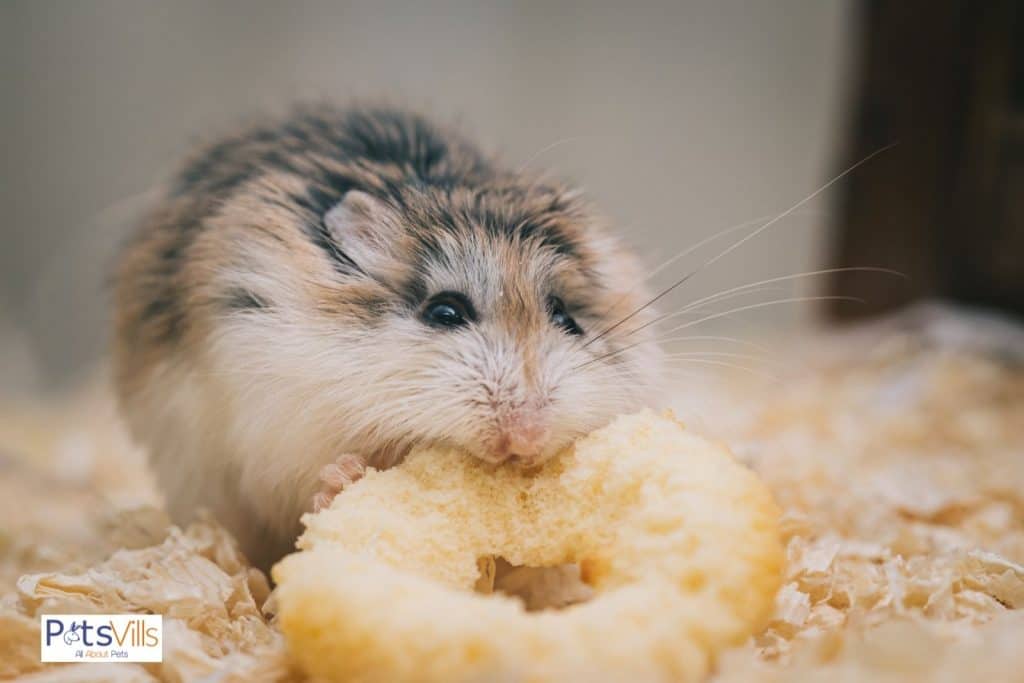
In addition to not being able to burp, hamsters cannot vomit, so if they eat something toxic, they are not able to vomit it back up. Other rodents, such as rats and chinchillas, also lack the ability to vomit and burp.
Scientists studied numerous rodents in an effort to learn more about their lack of vomiting, as some animals have a one-way valve that prevents food from coming back out of the stomach, such as horses.
During the course of studies, it was determined that, even if they were to try to vomit, rodents lack several mechanisms that would allow their bodies to vomit up materials. This also limits the possibility of them burping.
These body mechanisms include the diaphragm being much more reduced in rodents than in other animals.
The stomach is also not designed to allow foods to go back up the throat, instead of promoting foods to move from the stomach to the small intestines.
It also seems that rodents lack some neural pathways that are associated with vomiting and nausea. Scientists discovered this by administering medications that can trigger vomiting in most animals.
When rodents such as rats were given these medications, there was less activity in their nerves, as well as in their throats, suggesting less neural activity triggered by these medications.
Some people report seeing their hamsters vomit. This is likely just them releasing food contents from their cheek pouches rather than actually vomiting.
Hamsters are interesting creatures with their own unique behaviors and vocalizations. To better understand your pet, it’s important to familiarize yourself with the various sounds they make, including the common ‘hamster clicking noise‘. Read up on the topic to deepen your bond and become a better hamster owner.
Information About The Hamsters Digestive System
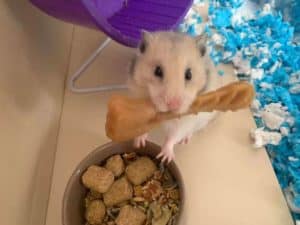
Hamsters, like humans and dogs, are monogastric omnivores.
This means that they can eat both meat sources as well as herbivorous materials, such as leafy greens.
Being monogastric means that your hamster’s stomach only has one chamber. This makes him or her unlike a cow or other ruminants, which have a four-chambered stomach.
Hamsters are unique from most other animals in that they have cheek pouches or outpouchings of their cheeks on either side of the mouth. These extend along with the head and neck, back to near the shoulders.
Hamsters use their cheek pouches to hold food when they are out on foraging trips in the wild and carry these materials back to their nests for eating later. Our domesticated hamsters do the same thing, holding food in their cheek pouches and carrying it back to their nesting area.
Hamsters have a single chamber in their stomach, but the stomach is divided up into two parts. The division of the stomach may be one reason why hamsters cannot burp or vomit.
The stomach is divided by a ridge and results in the first part of the stomach being the forestomach. The second part of the stomach is the glandular stomach.
The forestomach has multiple layers of the muscularis mucosae, known as the muscularis interna and muscularis external.
There are also three different gastric glands located near the ridge in the stomach, and this portion of the stomach produces mucus to aid in digestion.
The glandular portion of the stomach has some gastric glands and is made up of simple columnar epithelium. The layers of this portion include not just the muscularis interna and muscularis externa, but also the lamina propria and submucosa.
Indigestion is rare in a hamster, but when it occurs, they can stop eating. Any mammal can get gastric ulceration, which can be very painful.
After the stomach, your hamster has a small intestine and a large intestine. As noted above, food gets absorbed in the small intestine before being transported to the large intestine.
Hamsters have a cecum, which is a sac that dead ends in the gut. It is basically a pouch that is located at the junction of the small intestine and large intestine.
The cecum allows for bacterial fermentation of foods that are eaten, such as plant matter like cellulose. In the cecum, enzymes help the bacteria break down foods, and gas can be produced. This means that hamsters can fart!
Many nutrients may not be absorbed on the first pass through the digestive tract. As such, you might see your hamster eating his or her droppings.
They are ingesting the nutrients that have been released by the bacteria in their cecum and large intestines for better absorption. It might be gross, but that’s the way it works!
Can Other Rodents Pass Gas?
Now that we know about hamsters passing gas, you might wonder if other rodents can as well. Some can, but others are unable to pass gas, even though they are closely related to hamsters.
Rats are one animal that appears to be able to pass gas, but they like other rodents lack the ability to vomit or burp.
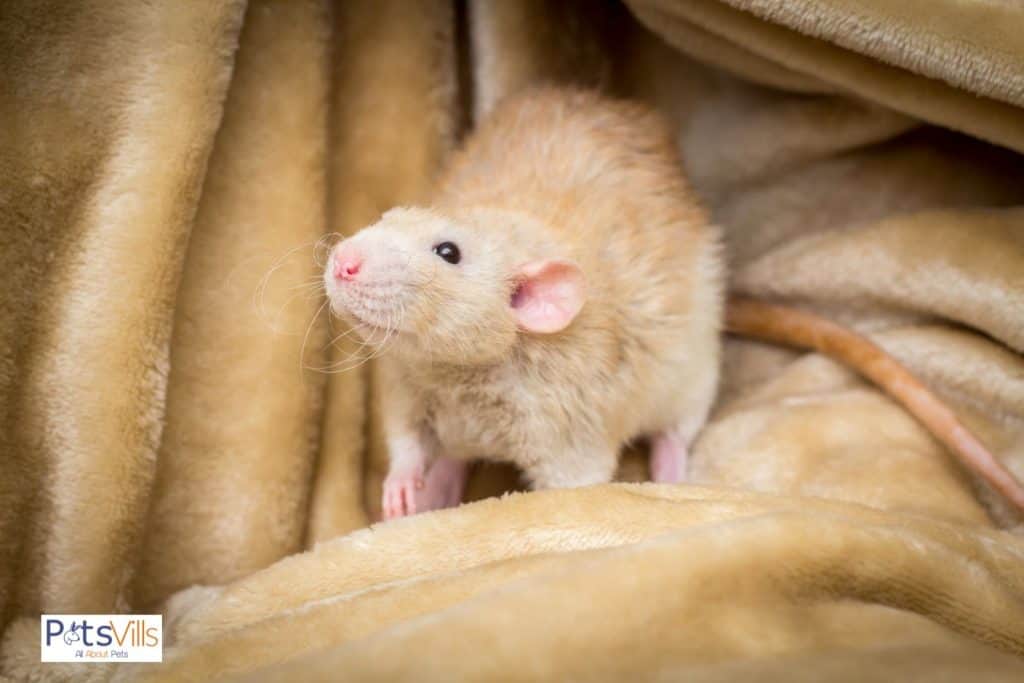
Gerbils appear to be able to fart, although there is much less information about this on the internet.
Mice and guinea pigs cannot fart, so gas can build up and unfortunately kill them. Avoid giving your mouse or guinea pig foods that can contribute to gas build-up, such as cruciferous vegetables.
Guinea pigs are prone to bloating, which can be painful and deadly. If you’re noticing their stomach getting distended and painful, get them to a vet immediately.
A variety of animals, such as hamsters, have the ability to pass gas or fart. While this isn’t usually loud or stinky, it can be, so watch what your hamster eats to limit how much he or she is affected, which could, in turn, affect you!
FAQs
Do hamsters smell?
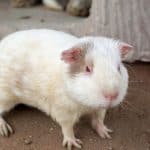
Hamsters will only start to smell if you don’t clean them out when they need it. For more information, check out our article that explains this in more depth as long as how often you should clean them out and more information.
Do hamsters make noises?
Hamsters make noises when they communicate. They are also crepuscular so expect them to be moving around and making noise at night.
How long do hamsters live?
Pet hamsters have a life expectancy of 1.5 to 3.5 years depending on the type of breed. Wild hamsters live for much longer due to their diet and other external factors.
References
- Extance, Andy. 2016. “Explainer: The Chemistry of Farts.” Chemistry World. Chemistry World. December 21, 2016. https://www.chemistryworld.com/news/explainer-the-chemistry-of-farts/2500168.article.
- “FODMAP Diet: What You Need to Know.” 2021. Hopkinsmedicine.org. 2021. https://www.hopkinsmedicine.org/health/wellness-and-prevention/fodmap-diet-what-you-need-to-know.
- “SULFORAPHANE: Overview, Uses, Side Effects, Precautions, Interactions, Dosing and Reviews.” 2015. Webmd.com. 2015. https://www.webmd.com/vitamins/ai/ingredientmono-1070/sulforaphane.
- Vinerean, Horatiu DVM. n.d. “Hamsters.” Florida International University. https://research.fiu.edu/documents/facilities/acf/documents/hamster-biology-husbandry.pdf.
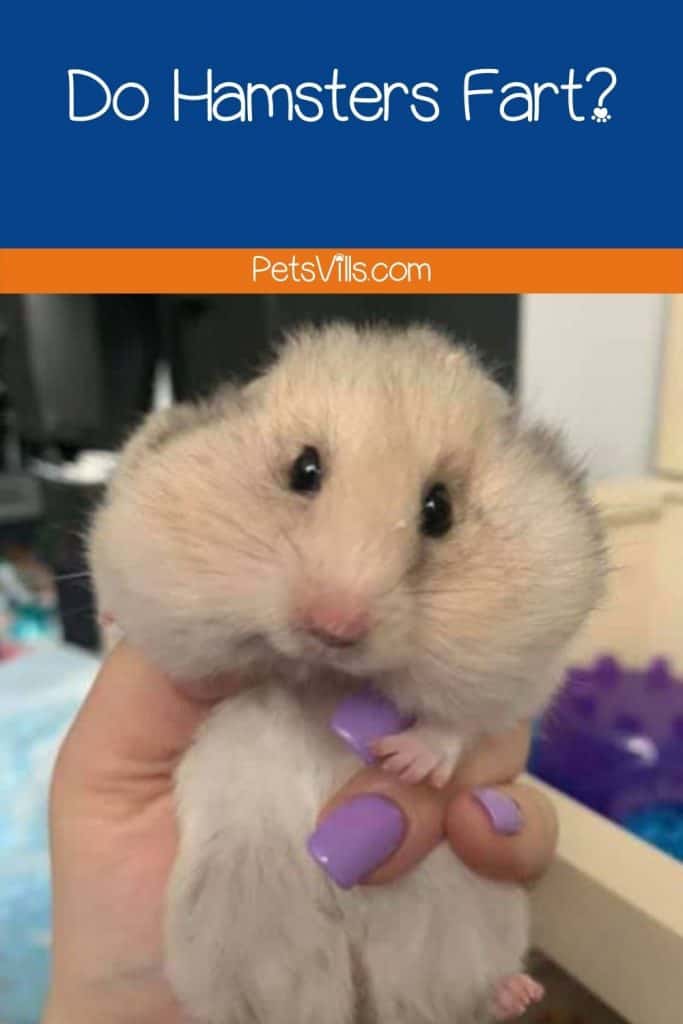
Did you ever hear your hamsters fart? Let us know in the comments below!
Alina Hartley is a small-town girl with a ginormous love of bearded dragons. It all started with Winchester, a baby bearded who was abandoned at the shelter by his former owners because of a birth defect that caused one front leg to be shorter than the other. Alina originally went to the shelter looking for a guinea pig, but one look at Winchester and it was love at first sight. From that day on, Alina has dedicated her life to learning everything she can about bearded dragons. She loves helping new beardie parents start their incredible journey with these magnificent reptiles.
Follow her on:
LINKEDIN
TWITTER.
Read her latest articles HERE
Learn more about her HERE.

